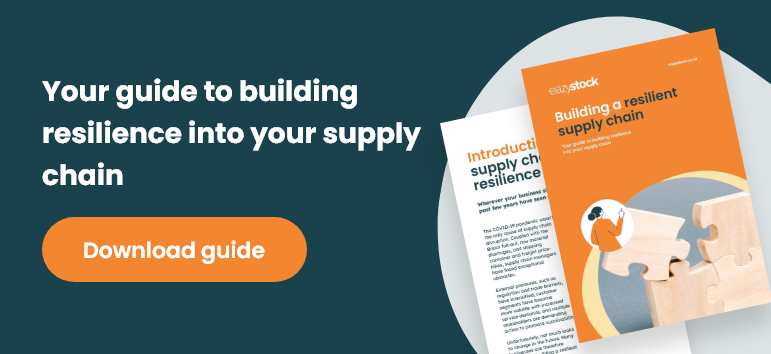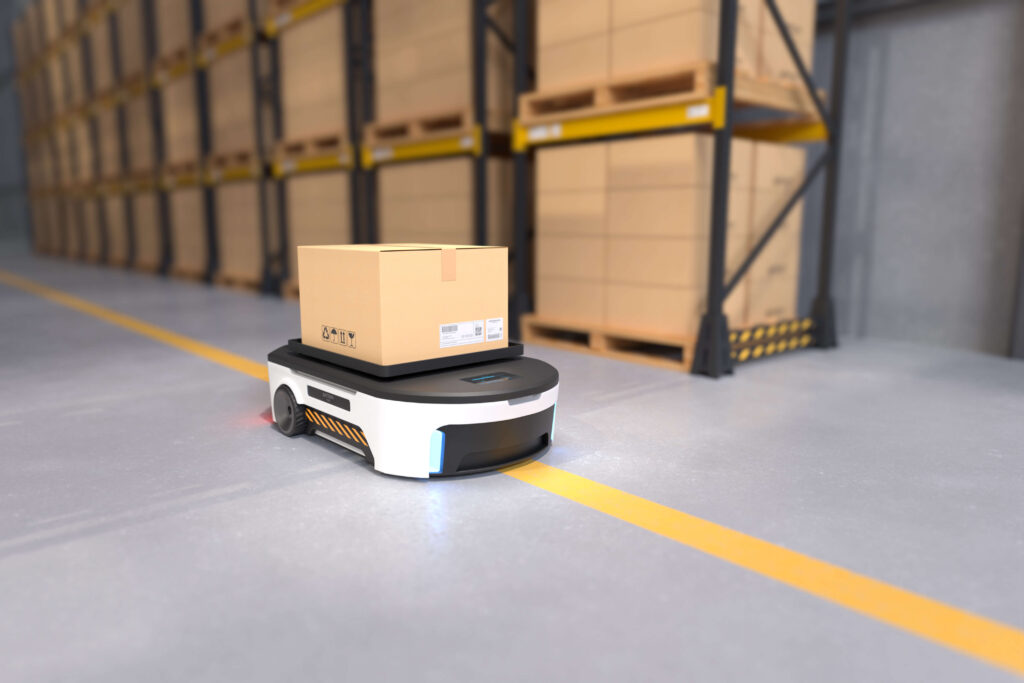A guide to optimizing your supply chain
What does supply chain optimization mean?
Put simply, supply chain optimization means using technology to get inventory to the right place at the right time – at the lowest cost and highest profit for your business.
Supply chain optimization can be explained as aiming to minimize operating costs and streamline processes throughout the supply chain to improve efficiency, reduce risk and ensure stock availability at each stage.
Optimizing your supply chain will also make it more resilient and ensure processes are in place, so your business is better positioned to react to any unforeseen supply or demand disruption.
Supply chain optimization best practice
Here are six key areas to consider when looking to optimize your supply chain.
1. Build buffers into the supply chain
You can do this by increasing capacity at each stage of your supply chain. Adding safety or buffer stock can help you with unexpected demand increases.
Time buffers can help by getting inventory in early to allow for any delays in supplier deliveries or shipping.
Capacity buffers help when there has been a delay in the supply chain and could involve bringing in extra staff or automating processes to get back on track.
2. Review your supplier networks
By assessing your supplier network, you can understand how critical each supplier is to your business and the impact any disruptions to their supply could have on your business.
Identifying any weaknesses means you can fix those issues. You may also want to look at alternative supplier setups, such as increasing your network through diversification or reducing shipping times by finding suppliers closer to home.
You could also integrate aspects of the supply chain into your business, such as Lidl setting up their own container shipping company to reduce delivery delays and freight rates.
Building and maintaining strong relationships with your suppliers is key. Regular communication with clear goals can help support these relationships.
3. Increase technology to improve forecast accuracy
Accurate demand forecasting supports proactive supply chain disruption management and reduces the possibility of issues rippling through the supply chain. However, right now, market volatility and demand fluctuations make demand forecasting even harder than usual. Our article explains how to forecast and deal with fluctuating demand, including using appropriate historical data and how to deal with periods of stockouts.

4. Automate processes to build an adaptive and agile supply chain
Automated inventory management processes are vital to supply chain optimization. Inventory management teams need to know what, when, and how much to order.
Automation can also help increase capacity in your supply chain. You could automate the following: customer relationship management, demand management, order fulfillment, manufacturing flow management, procurement, product development, commercialization and returns.
5. Staff
McKinsey and Company have found that demand for labor has outstripped supply since the pandemic. Companies are struggling to recruit and retain staff, making it challenging to meet customer demand.
You need to understand where staff shortages will impact your operations and identify how to hire and retain the right staff. Review your competitors and compare your salaries and benefits to identify areas for improvement.
Hire the right people with the right skills at each stage of your supply chain. Make sure you provide training specific to their role in your company. This should be continuous – not just when they first join.
6. Embed sustainability into supply chain operations
We continue to face a global climate crisis, and consumers want more transparency in their supply chains. This increases pressure on companies to reduce their carbon footprint and build sustainability into their processes.
Due to the complexity of supply chains, it can be difficult to know where to start. Still, there are many opportunities to work with your supply network to find solutions.
Decarbonization of the supply chain involves mapping your end-to-end supply chain to understand the causes of emissions, product flows and interdependencies. This will give you an idea of where you focus your efforts and who to engage in your supply network to find and implement solutions.
Adopting a circular economy approach to manufacturing can also help eliminate waste of raw materials and pollution. This could involve redesigning products to last longer, be reusable, repairable or recyclable. For example, soft drink companies now use recycled plastic to manufacture new single-use plastic bottles.

Other opportunities to reduce carbon footprints include reviewing transportation methods and the fuel of your fleets. For example, are there opportunities for changing to electric or lower-emission vehicles, or could your waste-removal processes be more effective? This could result in lower transportation costs.
Not everything needs to be done at once. Creating a clear sustainability strategy with targets, KPIs and priorities can support buy-in across your company and network. It will also show your customers that you are working towards reducing your carbon footprint.
Benefits of supply chain optimization
Optimizing your supply chain and supply chain management can bring many benefits to your company.
- With a competitive marketplace, you need operations to be cost-effective to hold on to profit margins and remain competitive.
- Improved customer service and satisfaction by reducing or eliminating stockouts. Good product availability and a positive customer experience will ensure customers return time and again. It will also help you maintain your market share or even steal from your competitors who find themselves unable to meet demand.
- You’ll be in a better position to be proactive and stop firefighting. Using data will improve forecast accuracy and help you understand what’s around the corner, whether that’s responding to increased lead times or changes in demand.
- Better able to react to disruption. Better systems and processes will make you more agile, meaning you can respond quickly to any changes. An optimized supply chain will enable you to tweak your plans and deal with supply chain disruption. Our whitepaper Building a resilient supply chain explains these areas in more detail.
Optimization tools
A crucial part of supply chain optimization is maintaining healthy inventory levels. It’s critical to keep track of inventory and run regular reports to check whether levels are correct.
Ideally, you should track inventory levels in real-time and follow items along the supply chain, from your suppliers to your customers.
Inventory management can be done in different ways, but not all systems will provide the same level of information. For example, spreadsheets can hold a lot of data but require a lot of manual input, making them high risk. They go out of date quickly, and it’s hard to automate their update.
Inventory management or, even better, inventory optimization tools can provide more reliable and comprehensive data. They can accurately forecast demand, classify inventory items, calculate safety stock and reorder quantities, and provide a wealth of reports. This can help you avoid stockouts or holding too much excess inventory, which could become obsolete.
An inventory optimization tool such as EazyStock can support your supply chain optimization, streamlining your processes and providing vital data. If you’d like to know more, speak to one of our team to arrange a demo.








